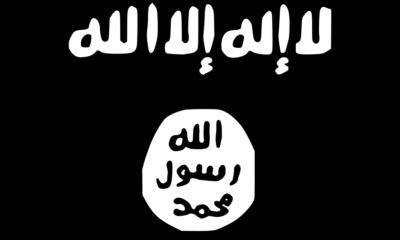As a result of the frenzy surrounding the current Ebola situation, an NIC instructor gae a lecture on the topic Oct 23.
Cheri Zao, a medical doctor and biology instructor, talked about the virus, the current Ebola crisis in West Africa and its passage into the U.S.
Zao hosted the lecture to help people better understand Ebola, and the current situation created by the outbreak of the virus.
“I felt that better information needed to be put out there in a format that people could better understand,” Zao said.
Zao said that the strain of Ebola affecting West Africa is known as Zaire, and is the most lethal of the five strains of Ebola. Of the other four strains, only three affect humans while the final strain affects only monkeys, apes and primates.
Despite the state of healthcare in West Africa and the lethality of the Zaire strain, Zao said that the mortality rate of the disease is down to 50 percent.
Zao said that because of many factors, including population density, a large number of people in West Africa have been affected. The lack of proper infrastructure has led to Ebola sufferers not being able to be admitted by the swamped hospitals. In addition, 1 in 20 healthcare workers are contracting the virus during treatment.
Zao said that Ebola survives in the bodily fluids of its host, and is transmitted from its primary host, the fruit bat, to the local populations of monkeys and other wildlife through saliva on partially-eaten fruits. that Ebola is then transmitted to the human population through consumption of wildlife.
“You actually have to have direct contact with the bodily fluids of someone who is sick from Ebola, or has died from Ebola,” Zao said.
Those bodily fluids include spit, sweat, blood, tears, snot, vomit, feces, urine, vaginal secretions, breast milk and semen.
When in humans, Zao said the virus will typically incubate for up to 21 days, and is not terribly contagious when mild symptoms of the virus are exhibited in the host. It’s not until the more serious effects are exhibited that the volume of the virus makes it highly contagious.
Zao said that the symptoms of Ebola generally don’t show for 8 to 12 days. Headaches, weakness, fatigue, muscle pain and sore throat are some of the initial affects of infections.
Zao said that vomiting, diarrhea and fever are the more serious effects of the later stages of Ebola when it’s most easily transmitted.
Ebola can then remain in the host for 3 to 6 months after the host survives the infection.

Zao holding an Ebola plushie with an informative tag. Thomas Hansen/Sentinel
Zao said that the capsule that surrounds the virus reduces its hardiness, and makes it easy to kill. A solution of 1 part bleach in 10 parts water is enough to kill it.
This lack of hardiness is why Zao said the virus is extremely unlikely to ever survive as an airborne virus. Dessication and UV rays would kill the virus quickly.
“There is no reason to actually believe that Ebola is transmitted in the air. The only time they’ve been able to do that is in the lab,” Zao said. “It’s not been reproduceable in the real world. You can do a lot of things in the lab that you can’t do in the real world.”
Zao said that because of this lack of hardiness, coughing and sneezing are not transmission sources associated with Ebola.
A host infected with Ebola will typically infect two other people, Zao said, as was the case with Thomas Duncan Clark, the first person to be diagnosed with Ebola in the U.S. during this crisis.
Duncan came to the U.S. with Ebola after he slipped through Ebola screening at a Liberian airport.
Zao discussed the incident surrounding Duncan and the two nurses infected, and the timeline of events that led up to the event.
Two nurses caring for Duncan were infected, reportedly due to improper handling of personal protective equipment (PPE). The nurses infected were alleged to have broken PPE protocol.
Zao demonstrated the PPE worn by hospital staff when dealing with patients in isolation, and the proper way to remove it.
Zao’s demonstration showed how easy it is to improperly handle PPE without proper training, and cause the wearer to become infected.
While discussing PPE, Zao criticized the U.S. healthcare system for having insufficient gear and training for handling patients in isolation.
A single mistake with PPE removal can result in the infection of the wearer.

Zao demonstrates proper PPE removal. Thomas Hansen/Sentinel
Zao discussed the mistakes made by the CDC when dealing with Ebola in the U.S., detailing the events surrounding improper advising by CDC personnel to an Ebola patient.
“People aren’t making the right decisions,” Zao said.
The lecture was attended by nearly 40, and lasted for two hours.
All of the information relayed by Zao was well received by some.
“It was great, very informative,” Ashlee Maple, 33, Nursing, Coeur d’Alene said. “I think that she really touched on a lot of subjects.”
Zao criticized the way the media has portrayed the issue, and felt that there was a need to inform people about the issue to alleviate fears.
“The way they’re treating Ebola is not right, and because of that they’re making people fearful,” Zao said.
A second lecture will be held on Oct. 28 in room 106 of the Meyer Health and Science Building at 1 p.m. The event is free and open to the public.
“I really hope that people found that talk informative, and that it allieved some of their fears,” Zao said.















